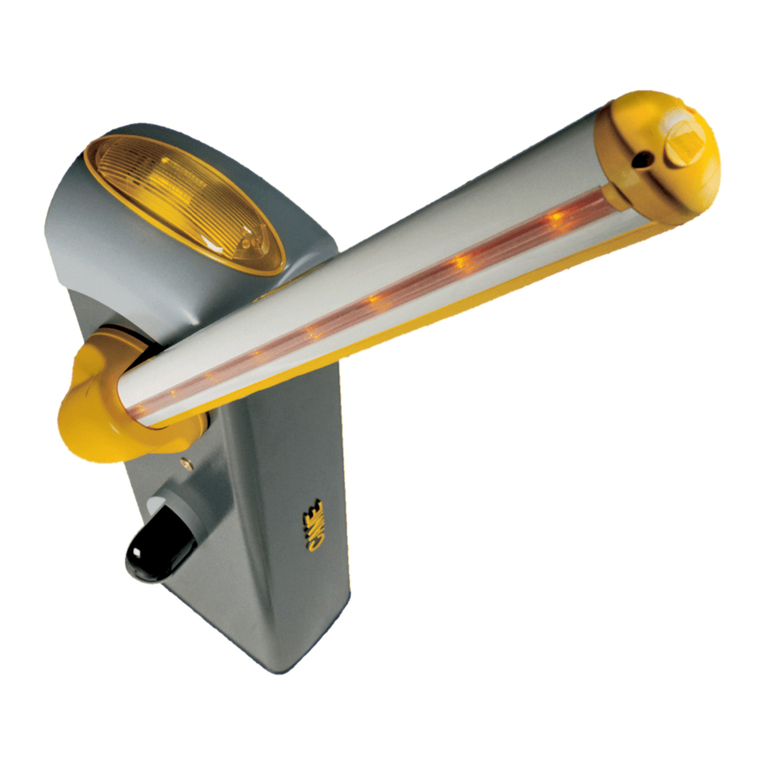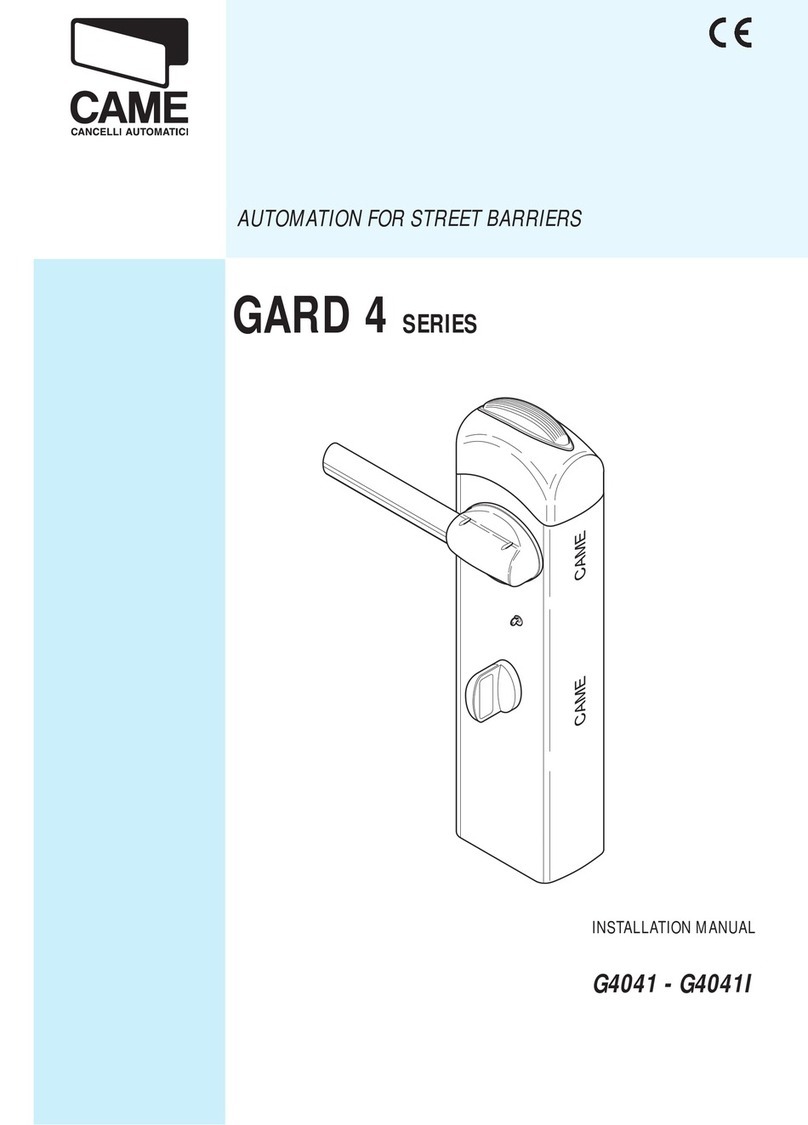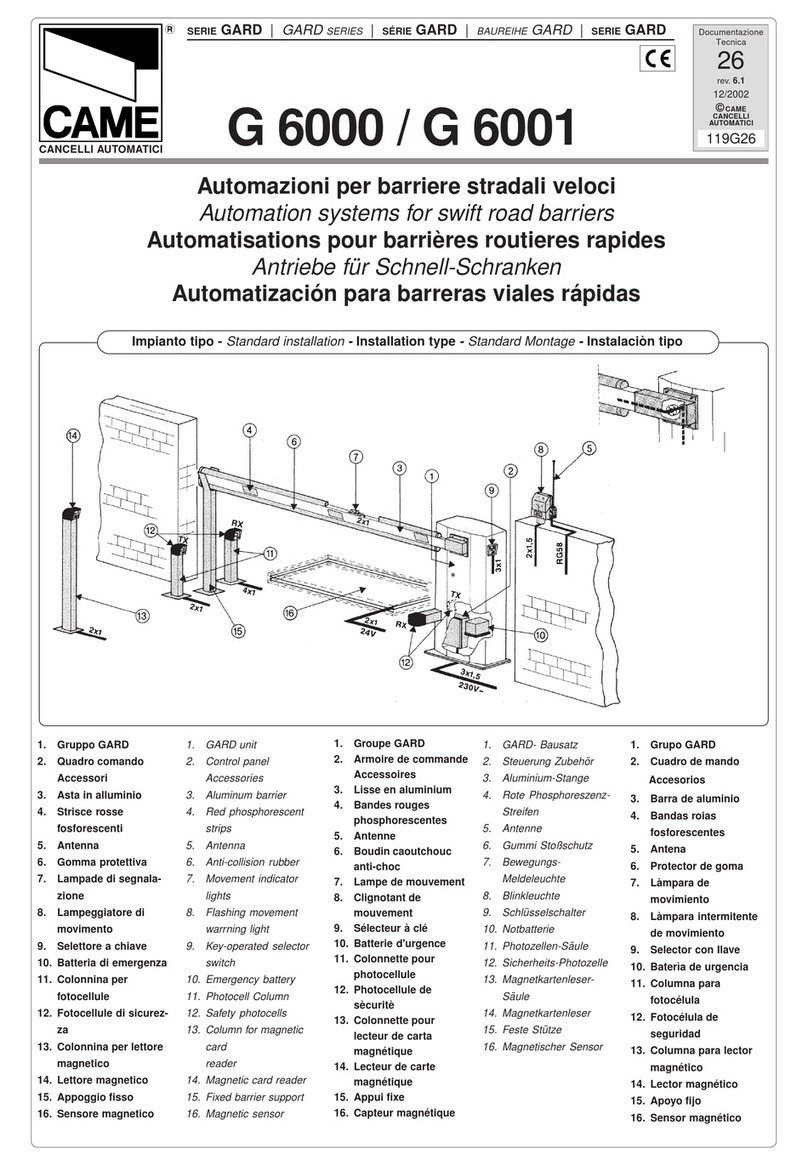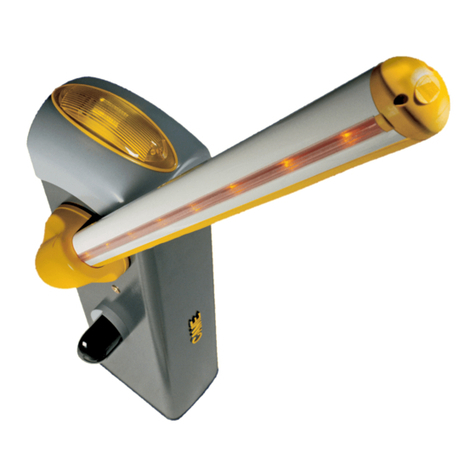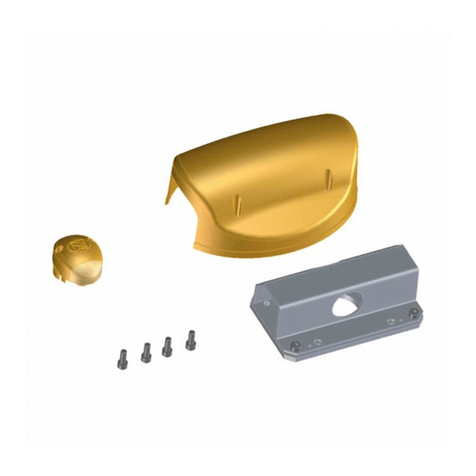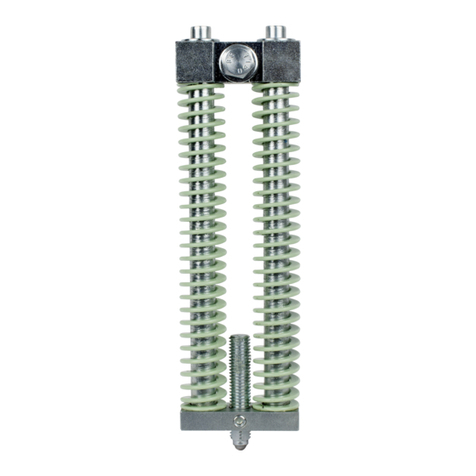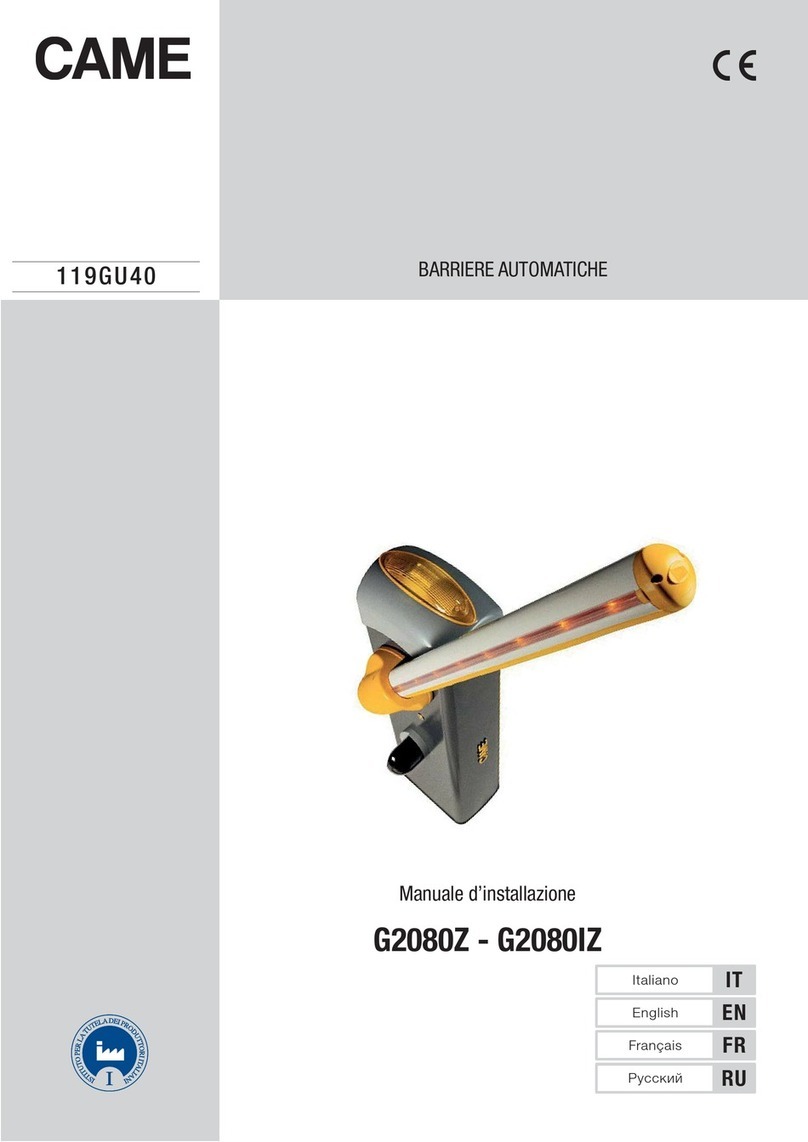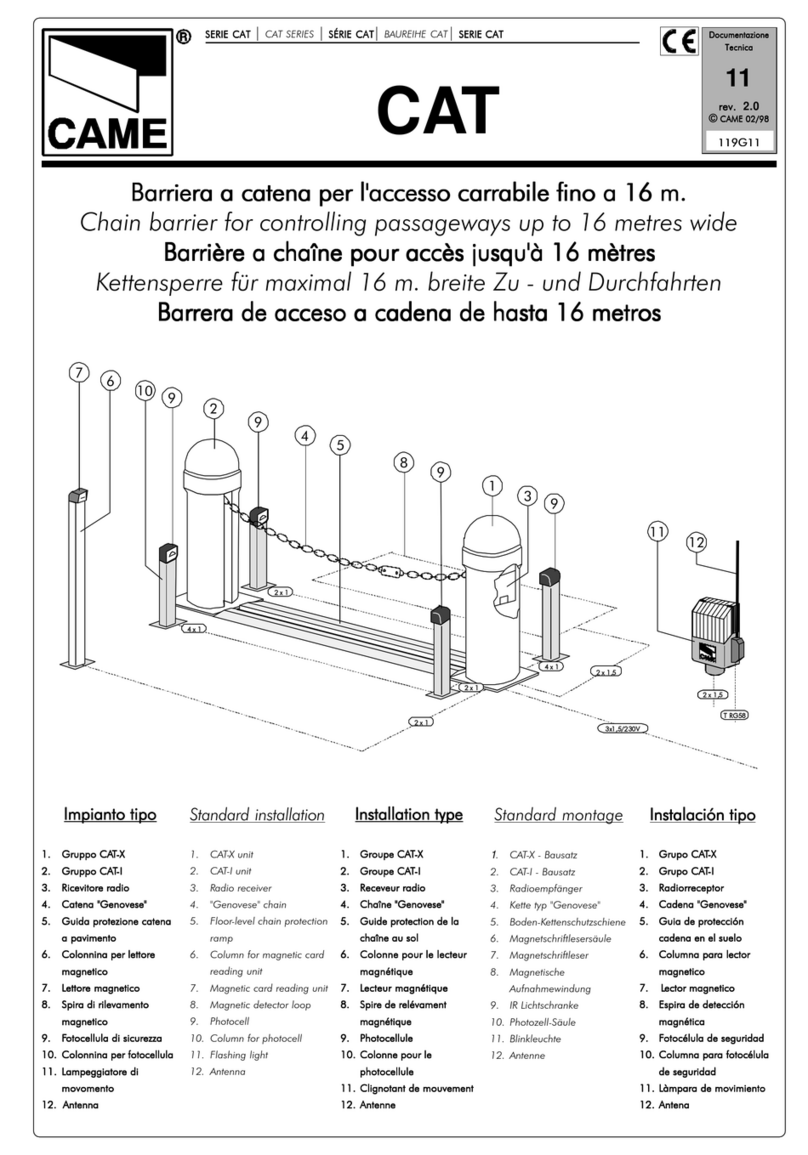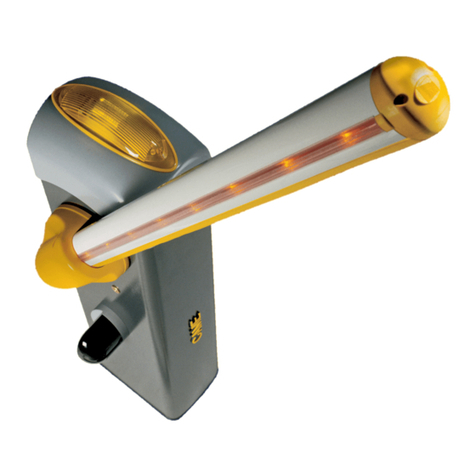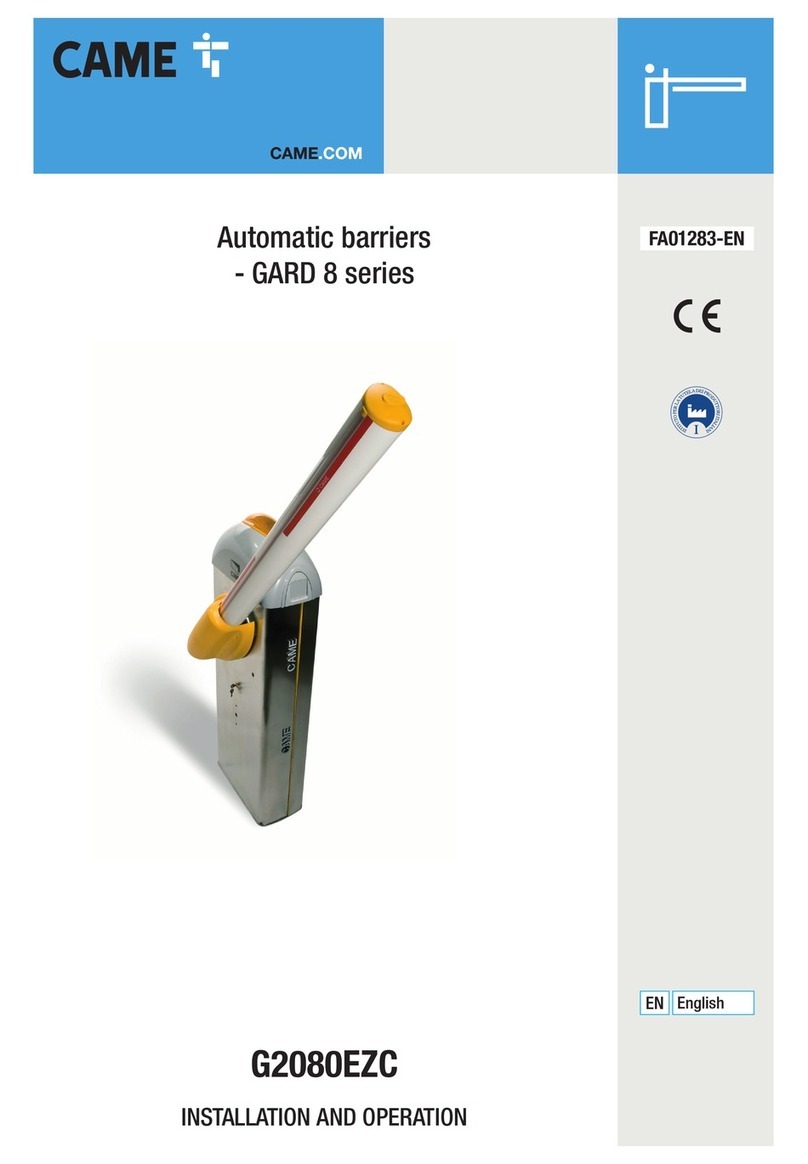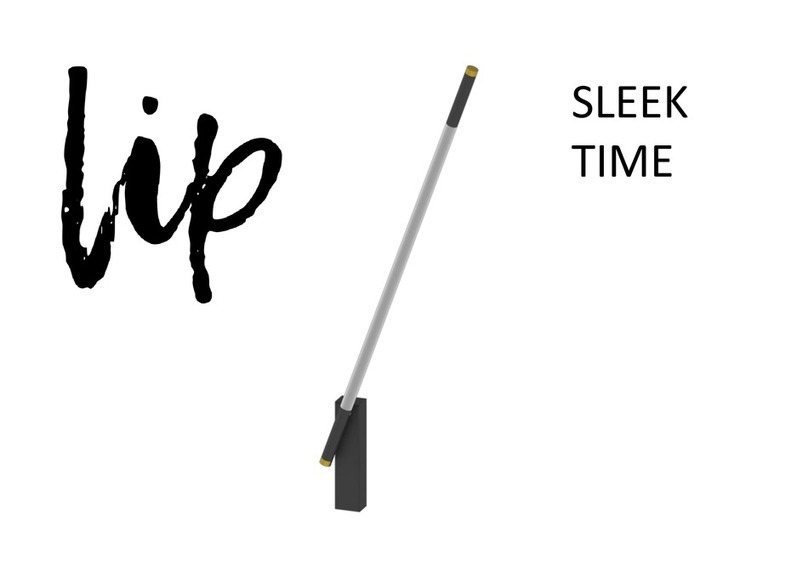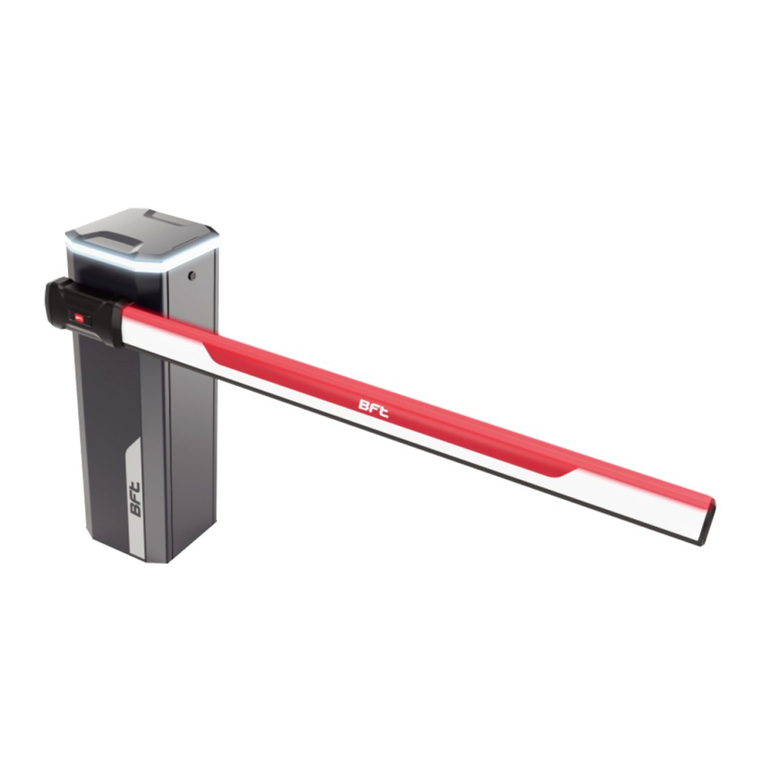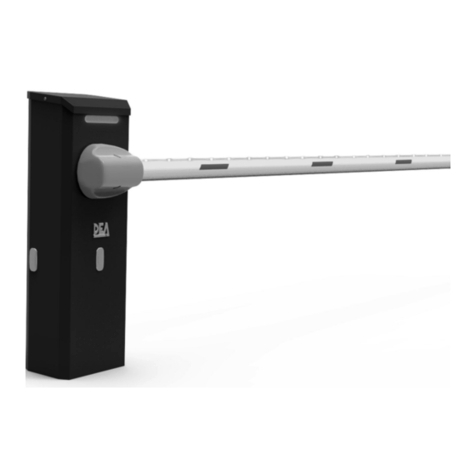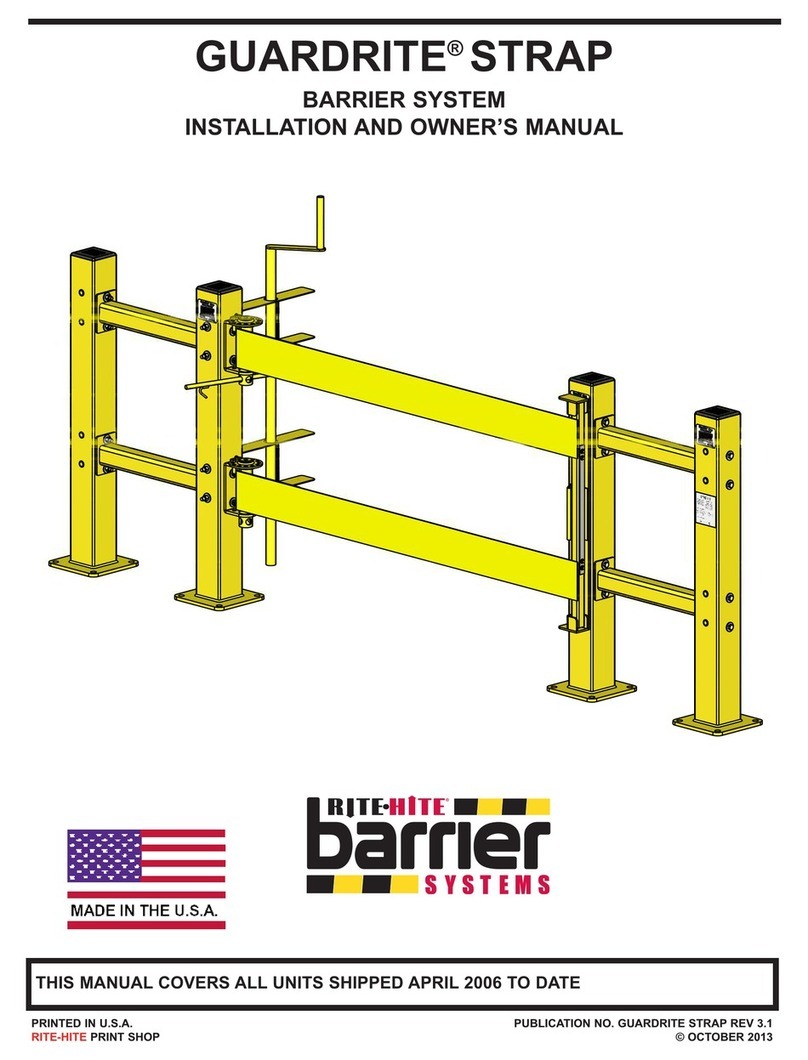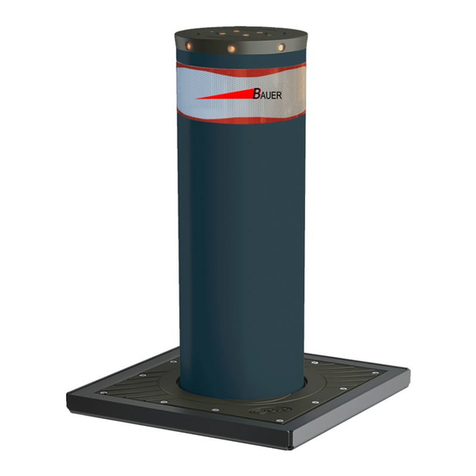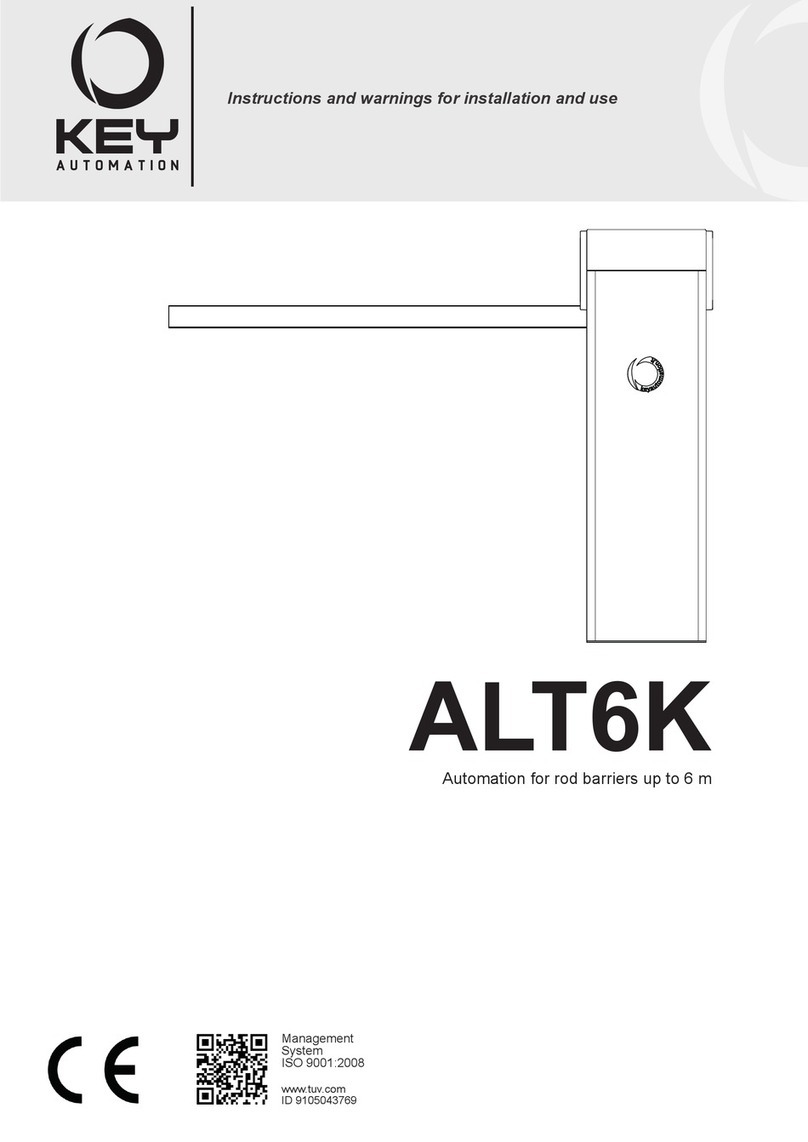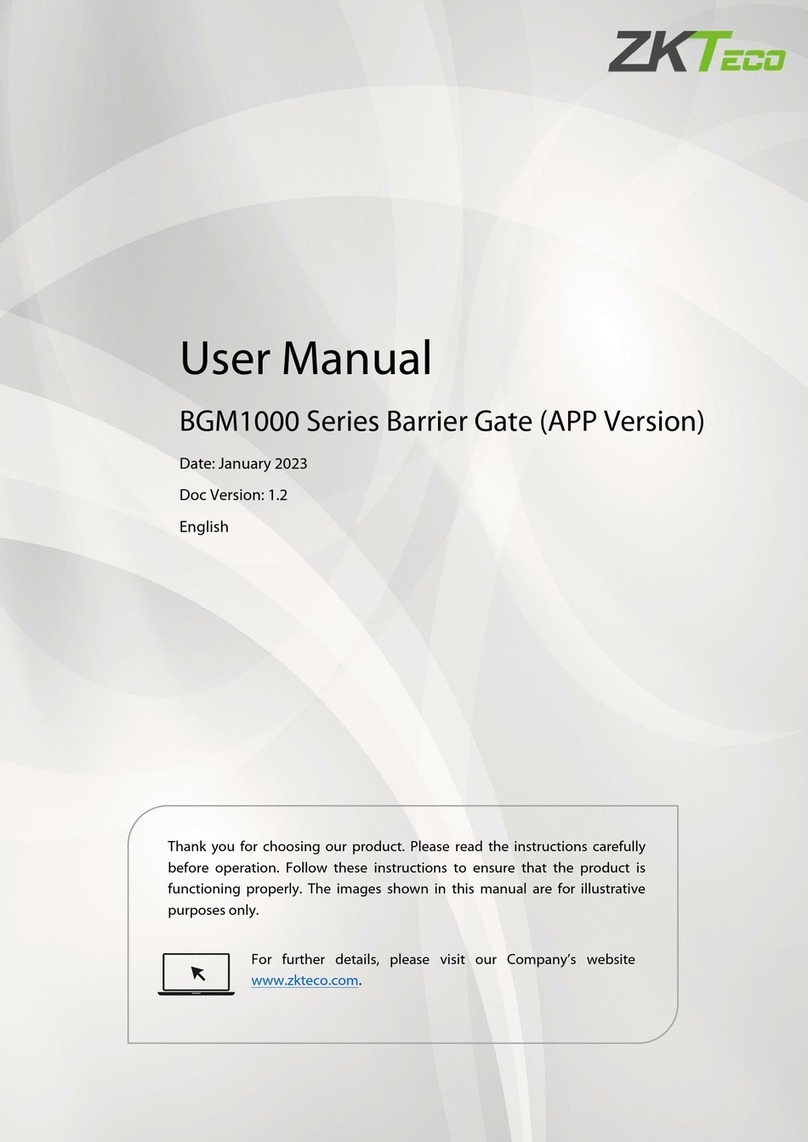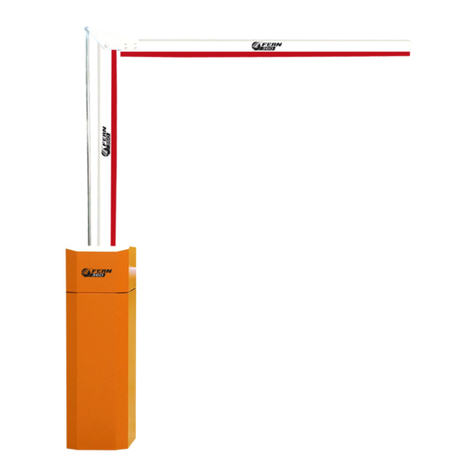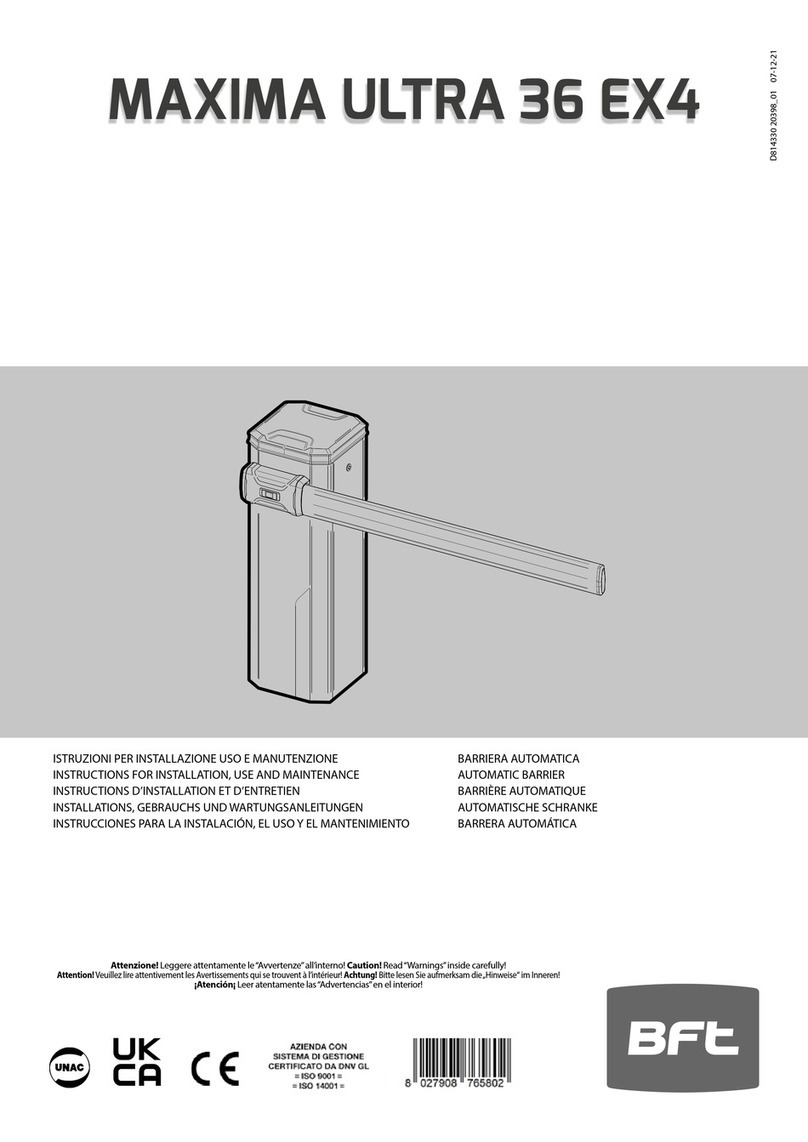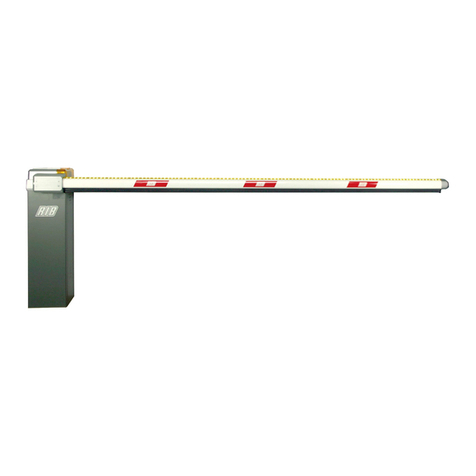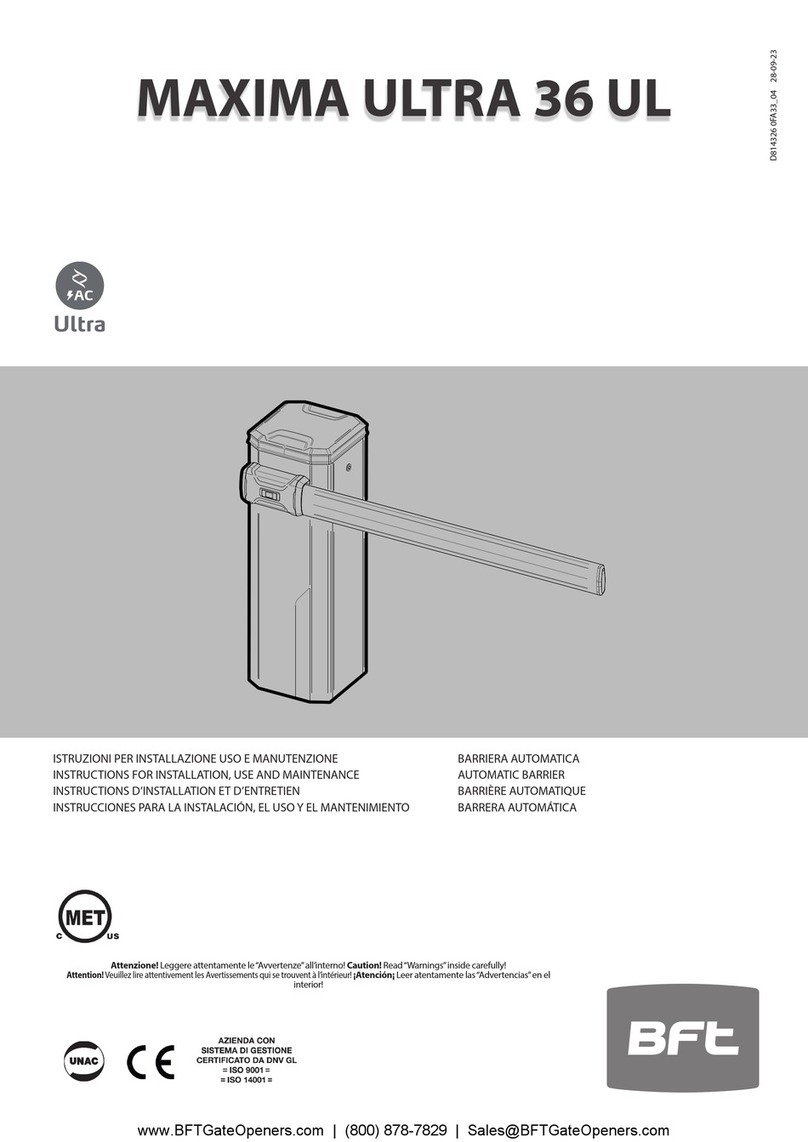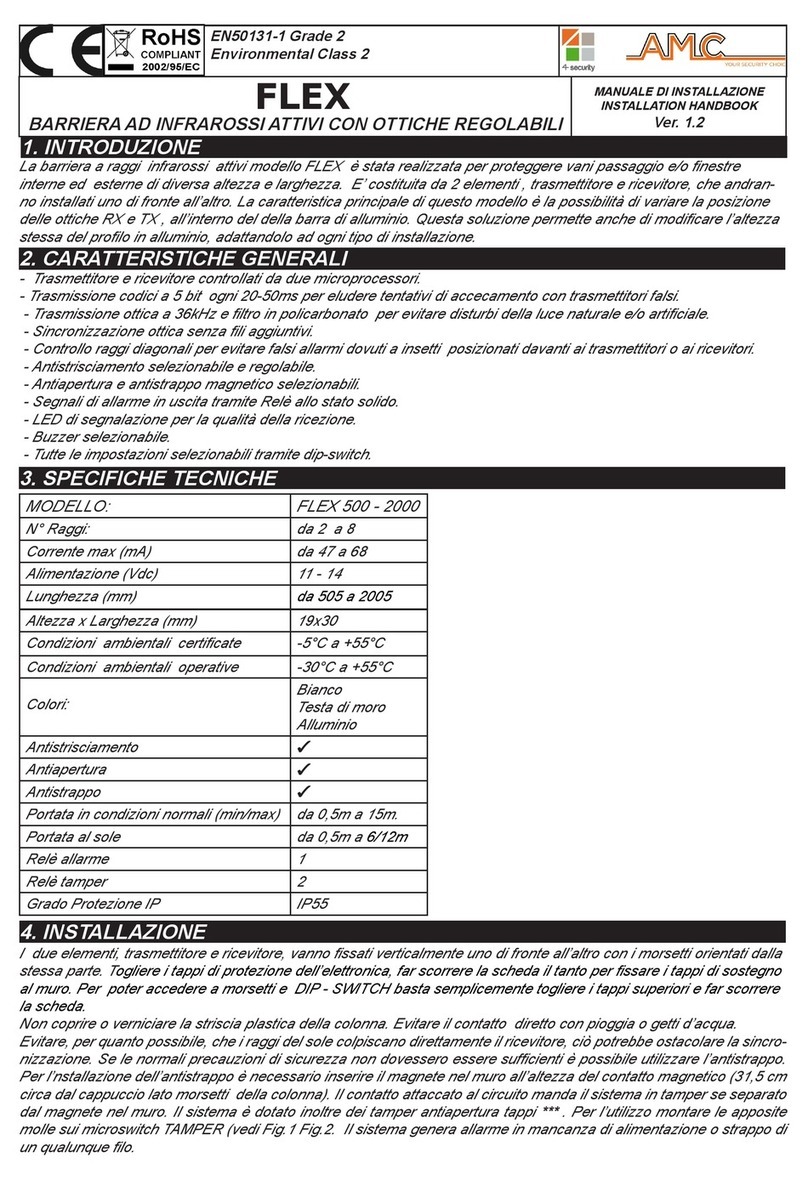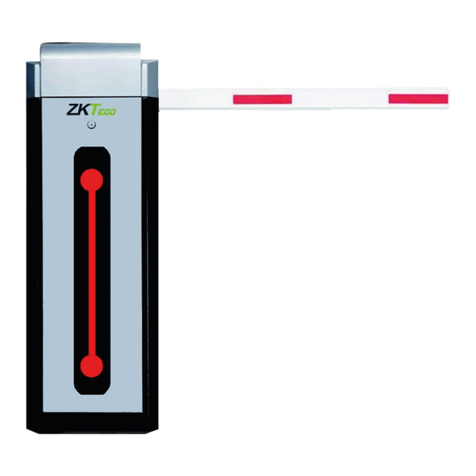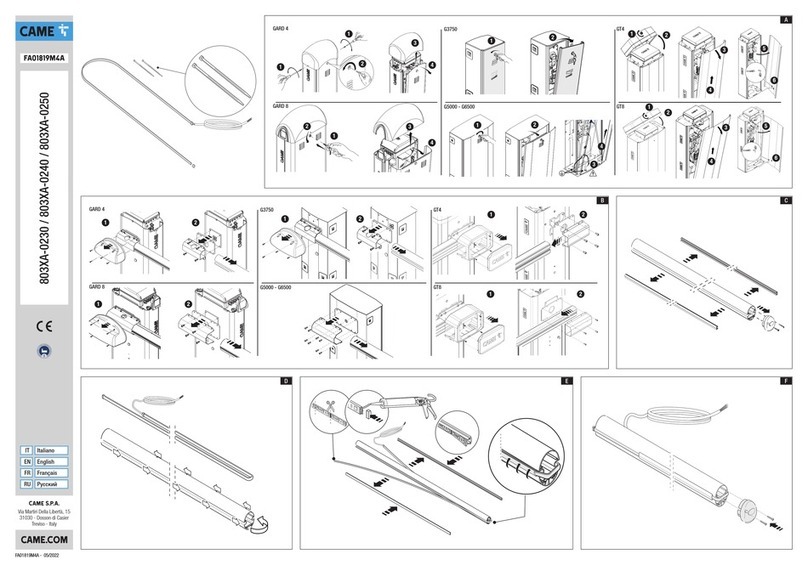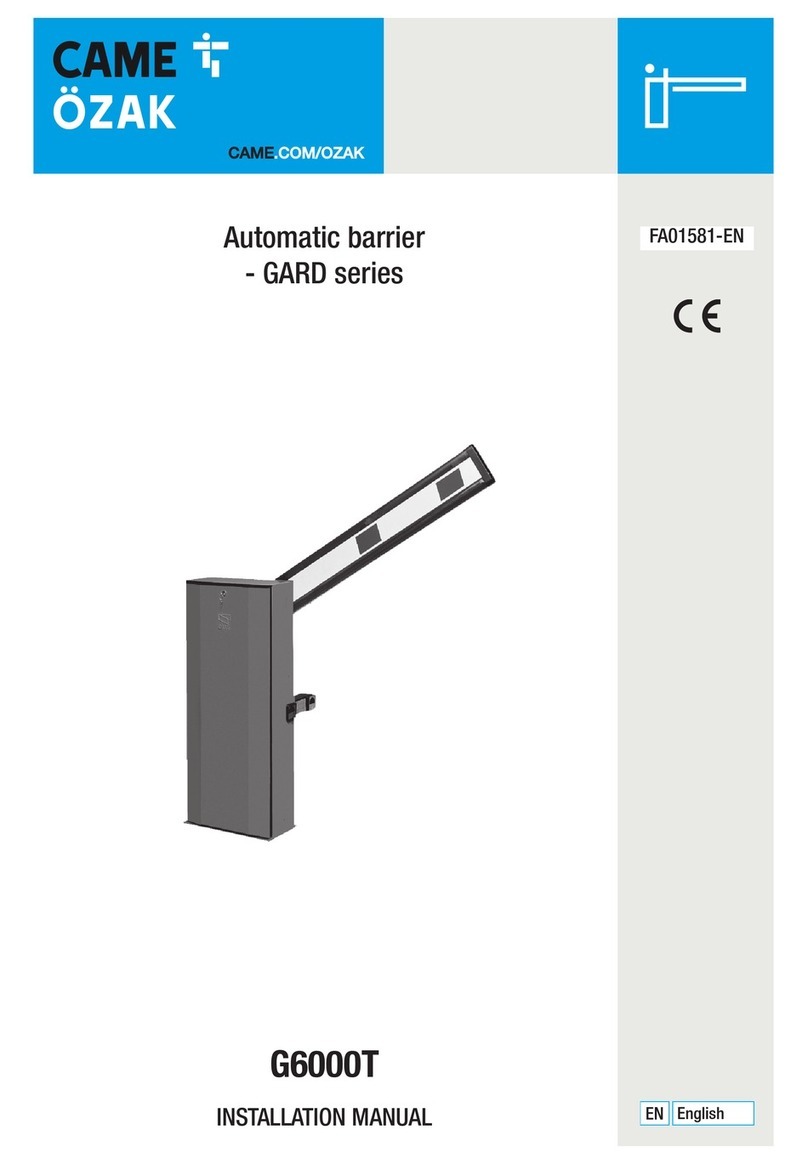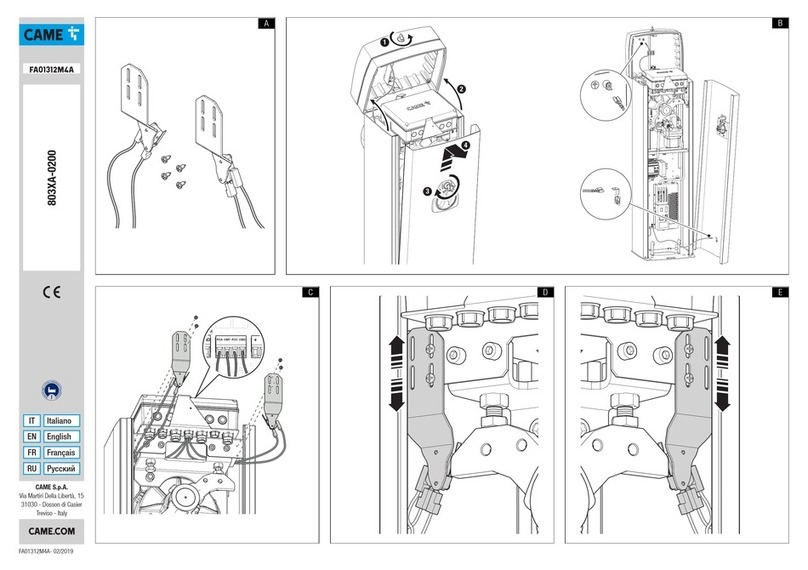
Page 3- Manual FA01556-EN - 07/2021 - © CAME S.p.A. - The contents of this manual may be changed at any time and without notice. - Translation of the original instructions
GENERAL PRECAUTIONS FOR INSTALLERS
Important safety instructions.
Please follow all of these instructions. Improper installation may cause serious bodily harm.
Before continuing, please also read the general precautions for users.
Only use this product for its intended purpose. Any other use is hazardous. • The manufacturer cannot be held liable for
any damage caused by improper, unreasonable or erroneous use. • This product is defined by the Machinery Directive
(2006/42/EC) as partly completed machinery. • Partly completed machinery means an assembly which is almost
machinery but which cannot in itself perform a specific application. • Partly completed machinery is only intended to be
incorporated into or assembled with other machinery or other partly completed machinery or equipment thereby forming
machinery to which the Machinery Directive (2006/42/EC) applies. • The final installation must comply with the Machinery
Directive (2006/42/EC) and the European reference standards in force. • The manufacturer declines any liability for using
non-original products, which would also void the warranty. • All operations indicated in this manual must be carried out
exclusively by skilled and qualified personnel and in full compliance with the regulations in force. • The device must be
installed, wired, connected and tested according to good professional practice, in compliance with the standards and
laws in force. • Make sure the mains power supply is disconnected during all installation procedures. • Check that the
temperature ranges given are suitable for the installation site. • Make sure that opening the automatic barrier does not
constitute a hazard. • Do not install on slopes i.e. any surfaces that are not perfectly level. • Do not install the operator on
surfaces that could yield and bend. If necessary, add suitable reinforcements to the anchoring points. • Make sure that
no direct jets of water can wet the product at the installation site (sprinklers, water cleaners, etc.). • Make sure you have
set up a suitable dual-pole cut-off device along the power supply that is compliant with the installation rules. It should
completely cut off the power supply according to category III surcharge conditions. • Demarcate the entire site properly
to prevent unauthorised personnel from entering, especially minors. • In case of manual handling, have one person for
every 20 kg that needs hoisting; for non-manual handling, use proper hoisting equipment in safe conditions. • When the
operator is being fixed in place, it may be unstable and overturn. Be careful and do not lean on it until it is fully fastened
in place. • Use suitable protection to prevent any mechanical hazards due to persons loitering within the operating range
of the operator. • The electrical cables must pass through special pipes, ducts and cable glands in order to guarantee
adequate protection against mechanical damage. • Make sure that the moving mechanical parts are suitably far away
from the wiring. • The electrical cables must not touch any parts that may overheat during use (such as the motor and
transformer). • All fixed controls must be clearly visible after installation, in a position that allows the guided part to be
directly visible, but far away from moving parts. In the case of a hold-to-run control, this must be installed at a minimum
height of 1.5 m from the ground and must not be accessible to the public. • If the passage is wider than 3 m, you must
use a fixed support for the boom. • If not already present, apply a permanent tag that describes how to use the manual
release mechanism close to it. • Make sure that the operator has been properly adjusted and that the safety and protection
devices and the manual release are working properly. • Before handing over to the final user, check that the system
complies with the harmonised standards and the essential requirements of the Machinery Directive (2006/42/EC). • Any
residual risks must be indicated clearly with proper signage affixed in visible areas, and explained to end users. • Put the
machine’s ID plate in a visible place when the installation is complete. • If the power supply cable is damaged, it must
be immediately replaced by the manufacturer or by an authorised technical assistance centre, or in any case, by qualified
staff, to prevent any risk. • Keep this manual inside the technical folder along with the manuals of all the other devices
used for your automation system. • Make sure to hand over to the end user all the operating manuals of the products that
make up the final machinery.

